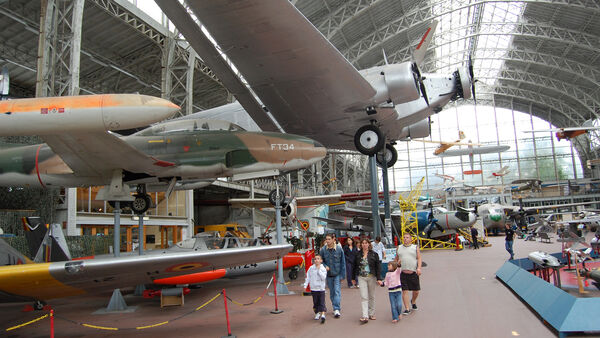War Rooms: Europe’s Military Museums
By Rick Steves
With every major anniversary for World War I and World War II, I think back to my one particular stay of mine in the Rhineland, when I noticed that a monument below my hotel window — one remembering Germany's war dead — still had an unused panel. My hunch is that it'll never be used. Germany, mighty today without the help of its military, has a profound distaste for wars. Like so many nations, it rose by the sword…and then fell.
All over Europe, there is little stomach for war. The motto of one military museum I visited in Vienna says it all: "War is something for museums." And many European countries have followed this advice — creating fascinating exhibits about their military heritage.
For some, visiting military museums is the highlight of a European trip. For others, "military" plus "museum" equals "dull." But you don't need to know how a Jeep works to enjoy the ride. Even if you're not a veteran or war buff, here are four national military museums that worth a look.
Imperial War Museum (London): This impressive museum covers wars from the last century to the present. Exhibits range from World War I biplanes, to the rise of fascism, to Montgomery's Africa campaign, to the Cold War, the Cuban Missile Crisis, the Troubles in Northern Ireland, the wars in Iraq and Afghanistan, and terrorism. The highlights are the new WWI galleries (renovated to commemorate the 100-year anniversary of that conflict) and the WWII area with its "Secret War" section and Holocaust exhibit. Rather than glorify war, this museum encourages an understanding of the history of modern warfare and the wartime experience, including the effect it has on the everyday lives of people back home.
Army Museum (Paris): Europe's greatest military museum is in France. The Army Museum in Paris' Hôtel des Invalides provides comprehensive coverage of many conflicts. See medieval armor, Napoleon's horse stuffed and mounted, Louis XIV-era uniforms and weapons, and the sword of the Marquis de Lafayette. Walk chronologically through WWI displays on trench warfare, France's horrendous losses, and the flawed Treaty of Versailles that led to the next war. The WWII rooms use photos, maps, videos, and a few artifacts to trace the Blitzkrieg that overran France, D-Day battles, the concentration camps, the atomic bomb, and the eventual Allied victory.
Royal Museum of the Armed Forces and Military History (Brussels): This surprisingly complete museum made me want to watch my favorite war movies all over again. It's an enormous collection of weaponry, uniforms, tanks, warplanes, and endless exhibits about military history, focusing on the 19th and 20th centuries. The grand finale is the vast (and I mean vast) aviation hall filled with warplanes. You'll see WWI biplanes and WWII aircraft, plus a Soviet MiG fighter (with camouflage paint) that crashed in Belgium in 1989 (one of the last airspace violations of the Cold War). This place is a nirvana for fans of military history and aviation, but skippable for those who think a "panzer" is a pretty flower.
Museum of Military History (Vienna): While much of the Habsburg Empire was built on strategic marriages rather than the spoils of war, a big part of Habsburg history involves the military. And this huge place tells the story well. Its two floors hold a rich collection of artifacts and historic treasures going back to the 18th century. The particularly interesting 20th-century section includes exhibits devoted to the 1914 assassination of Archduke Franz Ferdinand in Sarajevo (you'll see the car he rode in and his blood-stained uniform), the pre-Hitler Austrian Fascist party, the 1938 annexation by Germany, and World War II.
While these museums honor the sacrifices of war, they never celebrate it. Europeans today prefer endless diplomacy to once-in-a-while war. Europe's reluctance to go to war frustrates some Americans. I believe their relative pacifism is due to their familiarity with the reality of war, something most Americans do not confront in their daily lives. In the age of modern warfare, no American city has ever been wiped out like Coventry, Dresden, Caen, Rotterdam, or Warsaw. It's easier to feel detached when a war is something you watch on the nightly news, rather than something that killed your grandfather or destroyed your hometown.
After World War II, in the rubble of a bombed-out continent, Euro-visionaries assembled and agreed that they needed to overcome the hell that they were bringing upon themselves every couple of generations. Their solution was the European Union. It's been a tough sell, but in weaving together the economies of former enemies like France and Germany, everyone has become so interconnected that Europe should never again suffer such devastation. Minimizing the possibility of an intra-European war is the triumph of the European Union.
Europe knows what a war is: It ripped itself to shreds twice within my grandparents' lifetime. It's no surprise that while preserving the past, these museums also shout, "Never again."

